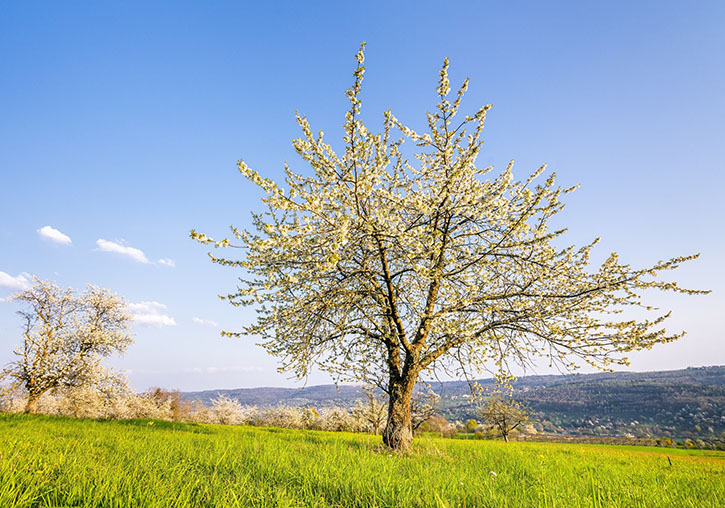
Scientists from the Desertification Research centre (UV-CSIC-GVA) have analysed the irrigation strategies of the almond tree, in order to determine the optimum water levels for this crop. The analysis serves to establish sustainable irrigation protocols under semi-arid conditions such as those found in Spain, the world’s second largest producer of almonds.
Researchers from the Desertification Research Centre (CIDE), a mixed centre of the University of Valencia (UV), the Spanish National Research Council (CSIC) and the Valencian Government, have prepared an analysis based on 15 almond irrigation trials to determine optimal water levels to maximise the efficiency of this crop. The study establishes that, in Spain, under semi-arid Mediterranean conditions, an application of 1,000 millimetres (mm) of irrigation or rain water provides the almond tree with its highest yield, with about 2,500 kilograms per hectare (ha).
The study has analysed two types of irrigation: sustained deficit irrigation of the almond tree, in which there is a continuous level of lack of water throughout the season; and controlled deficit irrigation, in which there is water deficiency only in certain periods. It is concluded that in a situation of moderate water stress, controlled deficit irrigation is more beneficial for the almond tree than continuous deficit.
“The regulatory bodies for water management in the different Spanish hydrographic basins can use these results to carry out a better management of water resources that can free irrigation communities and make a better balance of existing water demand. in the basin”, indicates Diego S. Intrigliolo, a CIDE researcher participating in the study. The Institute for Sustainable Agriculture (IAS-CSIC); the Andalusian Institute for Agricultural, Fisheries, Food and Organic Production Research and Training (IFAPA); the Provincial Agricultural Technical Institute (ITAP); the Food Research and Technology Centre of Aragon (CITA) and the University of Seville.
Spain, second world producer of almonds
Almond cultivation has experienced strong growth in recent years and Spain is the second largest producer in the world behind the United States. From the 580,467 cultivated hectares in 2015, it has evolved to 721,796 hectares, 24% more, according to the data used in the study. However, the low yield provided by the rainfed cultivation of the almond tree, of only 0.58 tons per hectare compared to 4.68 in the United States, requires the search for a strategy that provides higher yields to the farmer.
Added to the performance problems is the reduction in water supply by regulatory authorities, according to the study. The Guadalquivir Hydrographic Confederation established a provision of 250 mm of water for almond plantations in its hydrological plans for 2015, a figure that is very far from the irrigation needs to satisfy the evapotranspiration of the crop, which can be 800 mm in the south of Spain.
For this reason, it is of vital importance to carry out research that studies the best use of water in almond trees and determines how the expected production can vary depending on the amount of irrigation that can be carried out, according to the authors of the study.
Reference:
José M. Mirás-Avalos, Victoria González-Dugo, Iván F. García-Tejero, Ramón López Urrea, Diego S. Intrigliolo, Gregorio Egea. Quantitative analysis of almond yield response to irrigation regimes in Mediterranean Spain. Agricultural Water Management. Volume 279. 2023. DOI: https://doi.org/10.1016/j.agwat.2023.108208











